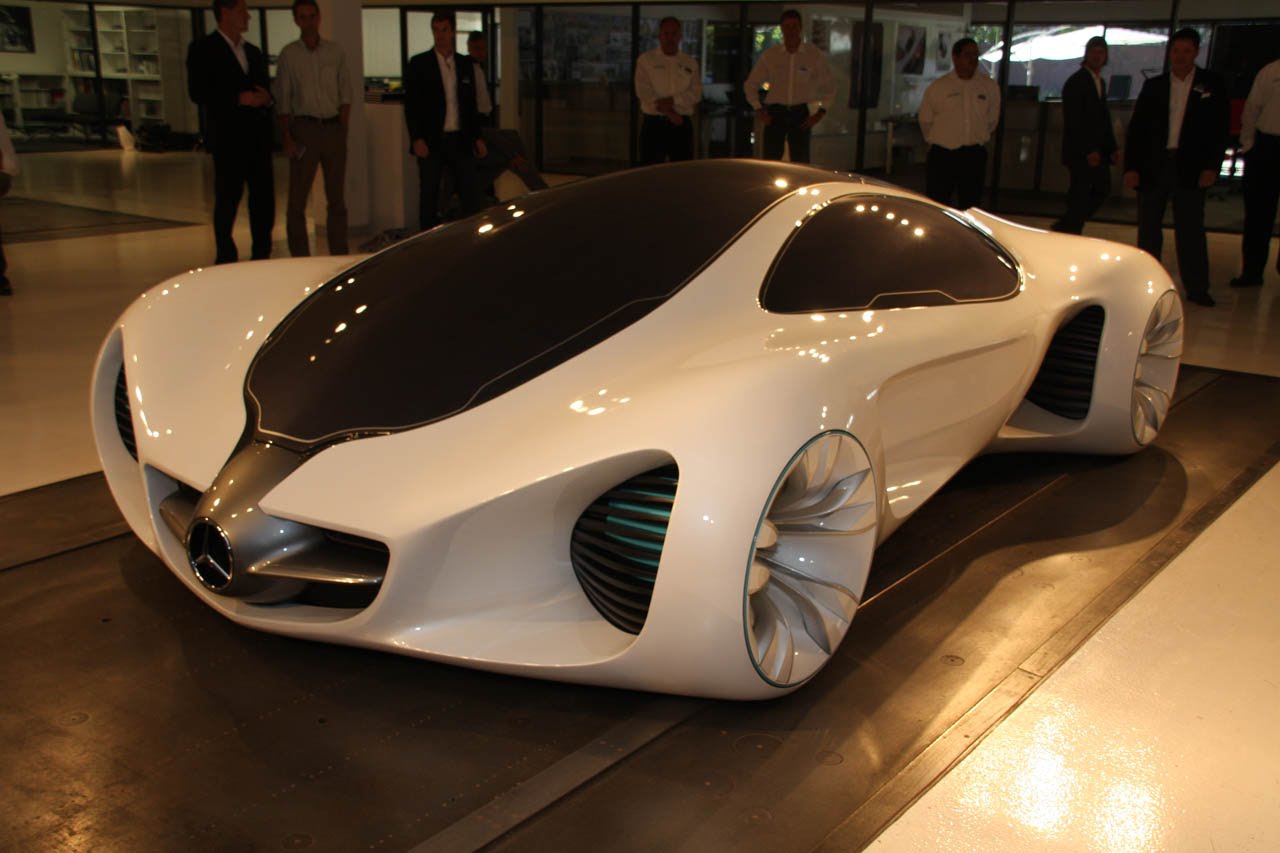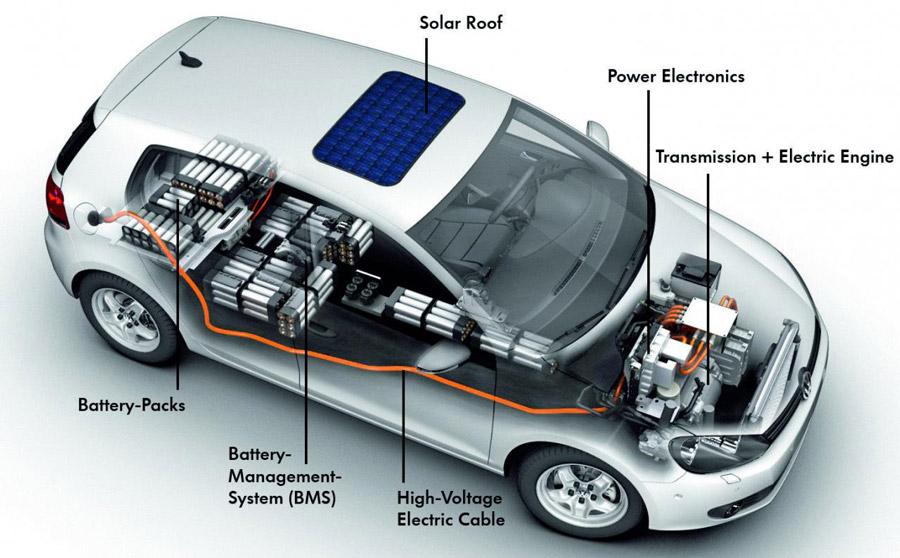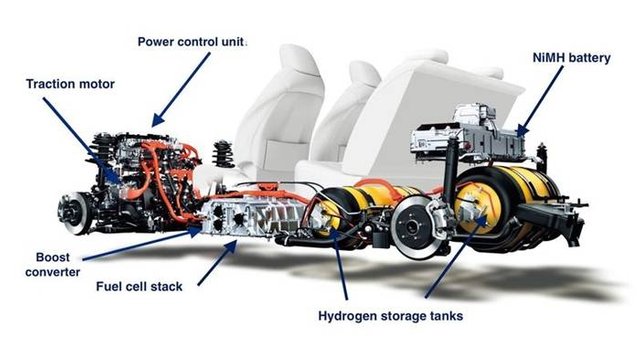FUTURE ON WHEELS, SUCCEED AND RUN WITH ME
FUTURE ON WHEELS, SUCCEED AND RUN WITH ME

The automotive sector is in good time and is in the front row to recover the first place among the technological advances of today, and looking towards a computerized future.
But this time the automotive industry presents us with something very different from the ordinary, I mean a quieter,
ecological and independent car, but without losing classic elements such as speed and a quick start, something like this.
One of the things that seek to improve these cars, is to reduce the CO2 that pollutes our environment and destroy our ozone layer, I mean electric cars and hydrogen, which although they are also electric do not need to be charged for electricity but gas natural, since its way of generating electricity is different, of these technologies we will highlight the following points.
- They are extremely silent.
- They do not merit as many components as they do not require changes, clutches and exhaust pipes.
- They only have 1 pedal, since you let go of the accelerator the car stops.
Electric car
An electric car, also sometimes called an "electric only" car, a "100% electric" car, or a battery electric car (in English BEV, acronym for Battery Electric Vehicle), is a car in which the wheels turn driven by a an electric motor that obtains the necessary energy from an accumulator that stores it, normally a battery, although it could also be a capacitor, and that can be recharged again and again by connecting the vehicle to a conventional or specific outlet, or wireless recharge.
The greatest exponent of this technology is the Tesla car, which achieves an autonomous route of 480Km with a single load.
An electric car, also sometimes called an "electric only" car, a "100% electric" car, or a battery electric car (in English BEV, acronym for Battery Electric Vehicle), is a car in which the wheels turn driven by a an electric motor that obtains the necessary energy from an accumulator that stores it, normally a battery, although it could also be a capacitor, and that can be recharged again and again by connecting the vehicle to a conventional or specific outlet, or wireless recharge.
The greatest exponent of this technology is the Tesla car, which achieves an autonomous route of 480Km with a single load.

Auto of Hydrogen
A hydrogen fuel cell electric car, or English FCEV, acronym for Fuel Cell Electric Vehicle, is a car in which the wheels rotate equally driven by an electric motor that gets the necessary energy from an accumulator not very large that the it stores (usually also a battery), and a fuel cell powered by hydrogen, which when combined with oxygen taken from the air, generates electrical energy on board the car that is transferred to the engine or to the battery, as the case may be. In principle this type of car is not pluggable, although technologically it is possible and there are variants that are (at least as a prototype).
We could also understand the hydrogen fuel cell electric car as a hybrid car in series, or as an extended-range electric car, in which the autonomy extension system, beyond what a battery accumulates, is a fuel cell that generates electricity during the operation of the car, and completes the accumulated in the battery to have more autonomy.
A hydrogen fuel cell electric car, or English FCEV, acronym for Fuel Cell Electric Vehicle, is a car in which the wheels rotate equally driven by an electric motor that gets the necessary energy from an accumulator not very large that the it stores (usually also a battery), and a fuel cell powered by hydrogen, which when combined with oxygen taken from the air, generates electrical energy on board the car that is transferred to the engine or to the battery, as the case may be. In principle this type of car is not pluggable, although technologically it is possible and there are variants that are (at least as a prototype).
We could also understand the hydrogen fuel cell electric car as a hybrid car in series, or as an extended-range electric car, in which the autonomy extension system, beyond what a battery accumulates, is a fuel cell that generates electricity during the operation of the car, and completes the accumulated in the battery to have more autonomy.

Autonomy
Another of the qualities that have the cars of the future is that they are autonomous, basically driving without human assistance because it has a series of cameras, radars and ultrasound sensors that record the environment of the car and are integrated into a software. Thus, the car can, without intervention of a person, maintain speed and distance, stop obstacles or avoid them and park, on the other hand it is always online so it knows where it is, thanks to services like google map that, to others allows you to plan the best optimal arrival route.
Another of the qualities that have the cars of the future is that they are autonomous, basically driving without human assistance because it has a series of cameras, radars and ultrasound sensors that record the environment of the car and are integrated into a software. Thus, the car can, without intervention of a person, maintain speed and distance, stop obstacles or avoid them and park, on the other hand it is always online so it knows where it is, thanks to services like google map that, to others allows you to plan the best optimal arrival route.
The giant Google completes the details of his new creation: a car that stops for pedestrians to cross, respects the traffic light and drives in the middle of heavy traffic. All without anyone behind the wheel.
Nanotechnology
Nano is a Greek prefix meaning "one billionth" so a nanometer represents one billionth of a meter. This would be equivalent to the dimensions of a soccer ball compared to the planet earth, in the cars of the future is nanotechnology, which makes it possible for the car neither to get dirty nor to scratch, basically with microscopic components it is already possible to repel the dirt that collides directly with the surface of the car.
They are called Nanorecoverings of Materials, they are a very widespread example nowadays, by means of the application of a compound with nanoparticles it is achieved that these are organized by themselves forming a layer that binds strongly to the surface where it is applied. If the surfaces are smooth and non-absorbent of liquids (such as crystals, metals or ceramics) the nano particles will quickly form a protective layer repellent of dirt and moisture.
The Mercedes Benz, for example, developed a scratch-resistant nano-paint by adding silicon oxide particles of less than a millionth of a millimeter, which combine with organic binders during drying to form a denser structure than traditional paints. Tests have shown that the resistance to scratches in the paint has increased by 300-% in relation to conventional and also ensures a permanent glossy finish.
Nano is a Greek prefix meaning "one billionth" so a nanometer represents one billionth of a meter. This would be equivalent to the dimensions of a soccer ball compared to the planet earth, in the cars of the future is nanotechnology, which makes it possible for the car neither to get dirty nor to scratch, basically with microscopic components it is already possible to repel the dirt that collides directly with the surface of the car.
They are called Nanorecoverings of Materials, they are a very widespread example nowadays, by means of the application of a compound with nanoparticles it is achieved that these are organized by themselves forming a layer that binds strongly to the surface where it is applied. If the surfaces are smooth and non-absorbent of liquids (such as crystals, metals or ceramics) the nano particles will quickly form a protective layer repellent of dirt and moisture.
The Mercedes Benz, for example, developed a scratch-resistant nano-paint by adding silicon oxide particles of less than a millionth of a millimeter, which combine with organic binders during drying to form a denser structure than traditional paints. Tests have shown that the resistance to scratches in the paint has increased by 300-% in relation to conventional and also ensures a permanent glossy finish.
The augmented reality
Augmented reality (RA) is the term used to define the vision of a physical environment of the real world, through a technological device, that is, the tangible physical elements are combined with virtual elements, thus achieving the creation of a Augmented reality in real time. It consists of a set of devices that add virtual information to the existing physical information, that is, add a virtual synthetic part to the real one.
In a car windows no longer only serve for protection, now they are surfaces capable of recognizing and understanding what happens around us, becoming a kind of virtual co-pilot with a 360º field of vision.
Augmented reality (RA) is the term used to define the vision of a physical environment of the real world, through a technological device, that is, the tangible physical elements are combined with virtual elements, thus achieving the creation of a Augmented reality in real time. It consists of a set of devices that add virtual information to the existing physical information, that is, add a virtual synthetic part to the real one.
In a car windows no longer only serve for protection, now they are surfaces capable of recognizing and understanding what happens around us, becoming a kind of virtual co-pilot with a 360º field of vision.
Auto Foldable
If you can not find enough space to park, folding cars are the solution to this problem. In Japan, the firm Four Link Systems set out to develop a model capable of selling to large automakers with a compact, foldable and easy-to-park electric vehicle, with a futuristic design inspired by one of the leading protagonists of Japanese animation.
With the name of Earth-1, the vehicle of Four Link Systems was created by the designer Kunio Okawara, responsible behind the robots wick of the Mobile Suit Gundam series. Its compact chassis, with a cabin of reduced dimensions, can fold on itself to make the most of the little parking space that large urban centers have.
3D printing
It does not take long for you to download the template of your favorite car and send it to print in 3D. One of the first vehicles printed in 3D was the Stratien in 2014, when the company Local Motors started a project to print pieces of vehicles in 3D and assemble them as quickly as possible. The structure of the vehicle was printed in 44 hours thanks to the machine created by Cincinnati Incorporated that is based on the process of deposition of molten material. The seats of the cars are retractable and there are possibilities to convert it into convertible. Everything has been created with additive manufacturing, except the engine that belongs to a Twizy of the Renault brand.
If you can not find enough space to park, folding cars are the solution to this problem. In Japan, the firm Four Link Systems set out to develop a model capable of selling to large automakers with a compact, foldable and easy-to-park electric vehicle, with a futuristic design inspired by one of the leading protagonists of Japanese animation.
With the name of Earth-1, the vehicle of Four Link Systems was created by the designer Kunio Okawara, responsible behind the robots wick of the Mobile Suit Gundam series. Its compact chassis, with a cabin of reduced dimensions, can fold on itself to make the most of the little parking space that large urban centers have.
It does not take long for you to download the template of your favorite car and send it to print in 3D. One of the first vehicles printed in 3D was the Stratien in 2014, when the company Local Motors started a project to print pieces of vehicles in 3D and assemble them as quickly as possible. The structure of the vehicle was printed in 44 hours thanks to the machine created by Cincinnati Incorporated that is based on the process of deposition of molten material. The seats of the cars are retractable and there are possibilities to convert it into convertible. Everything has been created with additive manufacturing, except the engine that belongs to a Twizy of the Renault brand.
Graphene
It is considered 200 times stronger than steel and its density is approximately the same as that of carbon fiber, and it is almost 5 times lighter than steel. Some of its most important properties are: hardness, very flexible and elastic, transparent, with high thermal and electrical conductivity, among others.
Graphene components throughout the vehicle will not allow a safer car due to resistance, which in turn will work from solar panel charging its batteries and inside screens on side panels and windshields, would allow an augmented reality for a safer driving.
It is considered 200 times stronger than steel and its density is approximately the same as that of carbon fiber, and it is almost 5 times lighter than steel. Some of its most important properties are: hardness, very flexible and elastic, transparent, with high thermal and electrical conductivity, among others.
Graphene components throughout the vehicle will not allow a safer car due to resistance, which in turn will work from solar panel charging its batteries and inside screens on side panels and windshields, would allow an augmented reality for a safer driving.